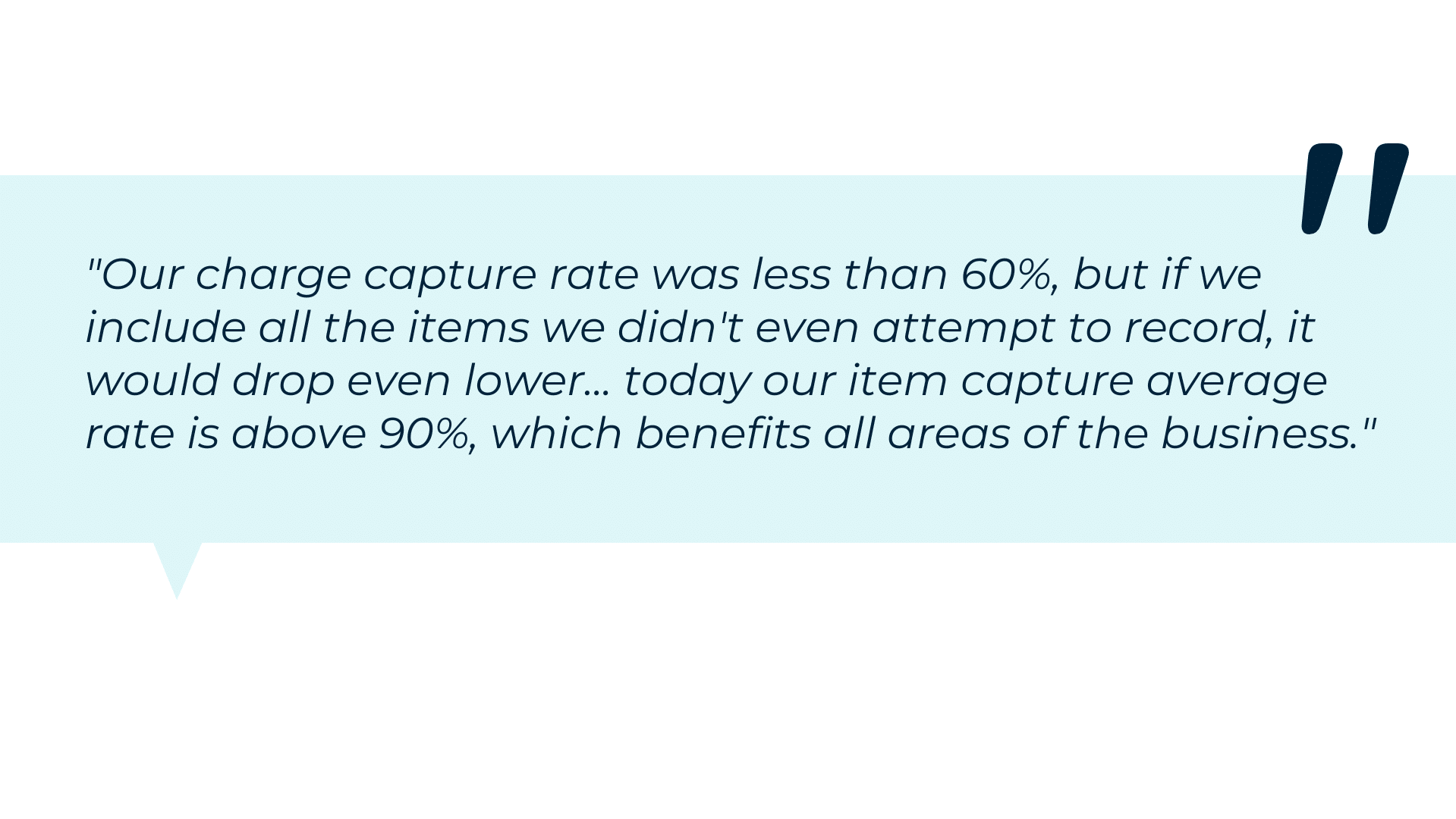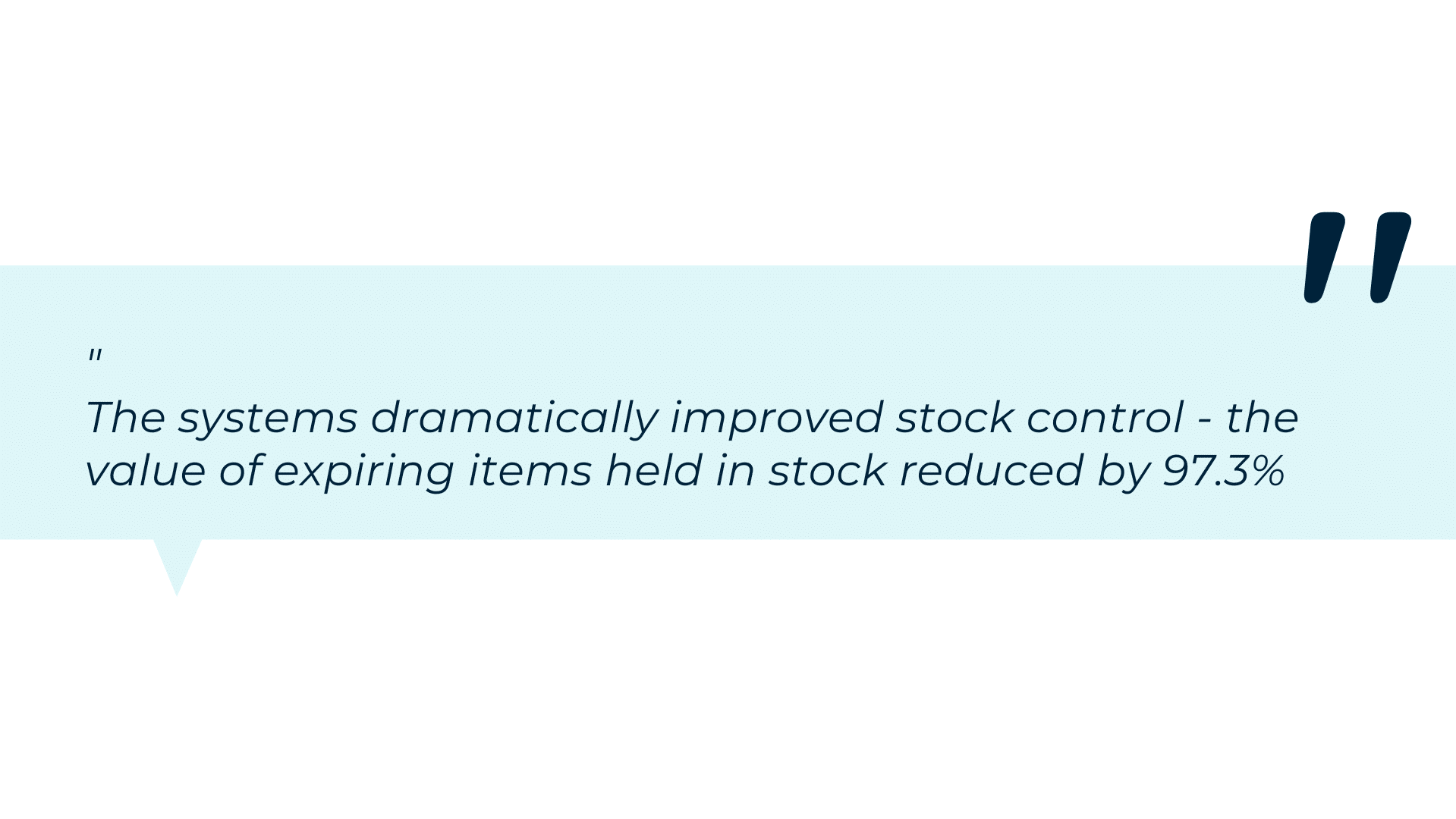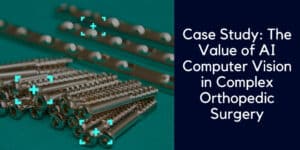What’s inside:
This case study looks at the impact that the installation of TotalSense and Snap&Go had at the Heart, Vascular and Leg Center in CA.
We highlight:
- The goals the center set to improve its management of high value medical inventory
- The challenges of manually managing medical inventory
- The transformative power of technology and automation
- Results and benefits of automated inventory management
The Heart, Vascular, and Leg Center (HVLC) in Bakersfield is part of a multi-specialty medical group specializing in the treatment of vascular disease, heart disease and chronic wounds.
The Bakersfield center is physician-led, by Dr. Vinod Kumar, and employs nationally recognized specialists who are passionate about treating peripheral arterial disease and achieving amputation-free outcomes. The center has been serving Kern County residents for 20 years and uses cutting edge technology to diagnose and treat patients.

GOALS
- Establish enhanced inventory control by transforming inventory management into a fully automated system.
- Establish a digital utilization tracking system at the point-of-care.
- Reduce the wastage of expiring products and lower costs
- Reduce the amount of ‘lost’ items that contribute to wastage.
- Reduce the time nursing staff spend on supply chain tasks.
- Continue to be at the forefront of innovation by adopting cutting-edge tools for the highest level of care.
CHALLENGES
The hospital previously used inadequate, manual systems to manage their supply chain processes and this caused inefficiencies:
Revenue and performance issues
- Surgical charge capture compliance was less than 60%, but taking into consideration non-sterilized items and trays, (items that were routinely left unrecorded), the charge capture rate in reality, was even lower.
- Inventory management involved the manual counting of stock, and a cumbersome replenishment process involved local staff plus a procurement team based in India. The average weekly time spent on supply chain admin by nurses was 2-3 hours per day.
- High levels of wastage caused by inefficient manual processes had a negative impact on
revenue cycle management. - The ERP system is Space Tracks+, and utilization was a manual, keying-in process that took place after surgery. A nurse survey that took place prior to IDENTI’s technology being installed, found high levels of dissatisfaction among nurses.
Inventory issues
- Restocks were based on partial vision of surgical usage.
- Inaccurate procurement led to regular product surpluses, shortages and stock outs. There were up to 30 out of stock events each month.
- When cabinets were overstocked, it was hard for staff to find the products they needed – and hunting stock down wasted valuable nurse time.
- There was high wastage, due to missing items, and products expiring on the shelves.
- Inefficiencies put a strain on medical staff, who needed to hunt down missing stock.
- Labor-intensive, manual processes were time-consuming for materials management staff.
Documenting usage issues
- The system only allowed utilization to be documented at the end of a procedure.
- Clinical staff took up to 30 minutes to solve system issues and oversee the IT or procurement teams, as they ensured correct item documentation in the system.
- Up to 30 individual documentation issues occurred a week, such as missing catalog and batch numbers.
- Many items ended up duplicated in HVLC’s Item Master, and this needed to be rectified.
- There was no digital documentation of batch number to the patient record, as required by FDA UDI regulations.
- Staff only attempted to record the most expensive items, leaving many lower-value, billable items undocumented.

SOLUTION
To address the issues at hand, the medical center decided to implement a comprehensive 360-degree solution that manages all types of inventory – from costly medical devices to common supplies. This solution aims to ensure transparent monitoring throughout the supply chain process, starting from the moment the surgical item arrives at the facility, to its utilization and documentation in the patient file.
The proposed solution incorporates 3 types of software devices:
- Snap & Go, an award-wining system for monitoring utilization in surgeries, leveraging implant documentation through image recognition technology.
- The system is supported by the TotalSense Smart Cabinet, an advanced system for tracking individual items using UHF-RFID technology.
- All these devices are centrally controlled by AI management software, serving as the system’s core, and facilitating remote visibility, even for the medical center’s procurement team, located in India. The system enables in-depth analyses and generates operational insights.
Planning and Implementation
The process of implementing the new technology commenced with a review of the medical inventory and supplies storage locations. IDENTI worked in partnership with the Heart Vascular and Leg Center to ensure their needs were fully met. This involved a review of the supply ordering process, a review and recommendations for the Supply Room, Procedure Rooms and Provider Room. There was onsite engineering, integration, implementation, training services and support from IDENTI for a total of 7 days.

RESULTS AND BENEFITS
After the successful installation, the following improvements were noted:
Increase in charge capture during surgery
There is now a digital record of the medical devices, implants and consumables used in surgery, including the batch number. This protects patients and ensures full UDI compliance. Before the deployment of Snap & Go almost all procedures had missing or duplicate items (mainly due to issues relating to the reporting system). Today, HLVC has reached the desired number of between 90-100% capture of reportable items.
In addition, a full picture of utilization is now available, and this drives the replenishment and inventory management process. Restocks are now based on accurate usage data, and orders focus only on products that are required. This data-driven procurement is streamlining the inventory and reducing the cost and frequency of orders. Before the introduction of the new automated system, the wastage of inventory due to expiring products, plus surplus, unused items was estimated at $75,000, and this has now been reduced by 97.3%.

Maximum safety
In the case of a product recall, there are now digital records in place, ensuring all recalls can be handled accurately and quickly. HVLC is now gaining access to a web-based global database of manufacturers’ SKUs, maintained by IDENTI. In the case of an adverse event, the system now gives the medical center the tools it needs to efficiently track and trace the recalled implants.
Minimum manual work
Nurses no longer spend long periods documenting utilization after each surgery has ended. Manual documentation used to take up to 30 minutes for a problematic item, but after the installation of the Snap & Go image recognition sensor, the charting process of each item has now dropped down to just a few seconds.
Average nursing time spent on documentation per day has dropped from 2-3 hours to between 30 mins to an hour – taking the midpoint of both figures, this works out at a staggering 70% reduction in admin time! That’s more time spent dealing with patients, which has a direct impact on patient safety and satisfaction.
Documentation is now simple and successful – a visual record provides the medical center with proof of use, which reduces disputes, and improves relationships with vendors. Automated charting enhances data integrity in the Item Master. IT intervention is no longer necessary, taking the pressure off busy nurses, and guaranteeing accuracy in the patient file.
Maintain excellence in all departments
The award-winning medical center has maintained its competitive advantage by selecting a cutting-edge suite of automated medical inventory management technologies. The tools used include patented image processing technology, integrated UHF-RFID-based hardware tools, and advanced AI and machine learning algorithms. These technologies are at the forefront of improving operational efficiency in operating rooms and are maximizing healthcare profitability, while maintaining the highest standards of patient safety.
Download the case study
Contact us if you are interested in learning more about how automated inventory management can improve operational efficiency and improve financial outcomes too.






